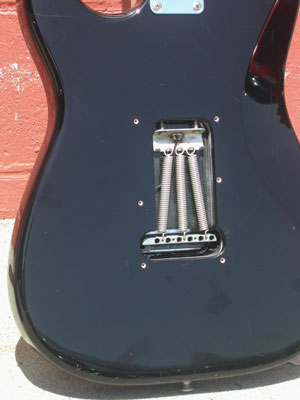A guitar can last many lifetimes; however, guitars have a variety of mechanical parts, and over time, any mechanical object can wear out. When that happens, you need to know how to replace those worn parts. The following are the guitar parts that are most likely to wear out or break and need replacing. You can perform any of these fixes yourself without doing damage to the guitar — even if you screw up.
Tuning machines
The tuning machine is a system of gears and shafts. Tuning machines deal with a lot of stress and tension, and we don’t mean the kind that you endure at your job. Tuning machines simply screw into the guitar’s headstock with wood screws (after you push the post through the hole and fasten the hex nut on top).
If you have a worn or stripped gear, consider replacing the entire machine. If more than one tuner is giving you trouble, consider replacing the entire set. Check that the replacement machine has its screws in the same positions as the original, because you don’t want to drill new holes in your headstock. If you’re having trouble matching the holes of your new machines with the existing ones already drilled in your headstock, take the guitar to a repairperson.
Strap pins
Strap pins are the little “buttons” that you use to attach the strap to your instrument. The strap pins are usually attached to the guitar with ordinary wood screws, and they can sometimes work themselves loose. If simply tightening the wood screw with a screwdriver doesn’t do the trick, try applying a little white glue on the screw threads and put it back in. If it’s still loose, take the guitar to a repairperson.
Bridge springs
If the guitar has a whammy bar, it has a floating bridge. A floating bridge is held in place by the string tension (which pulls it one way), and a set of metal springs — known as bridge springs — which pull in the opposite direction, holding the bridge in balance. You can find the springs (which are about 2 inches long and 1/4 inch wide) in the back cavity of the body, as shown in the following figure.

If one of the springs loses tension, your guitar will go out of tune whenever you use the whammy bar. When this happens, replace the springs; change them all at once so that they wear evenly. The springs just hook onto little holes, and with a little tugging and the aid of pliers, you can pop them off and on in no time.
You can even tighten the screws on the plate (called the claw) where the hooks attach, increasing the spring tension. Don’t worry — these springs won’t go sproingggg and hit you in the eye or go flying off across the room.
Some people like a loose bridge (which is more responsive but goes out of tune more easily) and some like a tight bridge:
If you like a stiff bridge that stays in tune (and who doesn’t!) and you only occasionally use the whammy bar, go for a stiff bridge setup. The more springs, the tighter the bridge; so if you have a two-spring setup, consider switching to a three-spring setup.
If you like to use the bar and you’re willing to trade a little tuning trouble for having a bridge with a lot of play, consider a looser setup. Guitarists who like to create ambient music (atmospheric music without a defined melody) prefer flexible bridges because they do a lot of dips and pulls on the bar.

